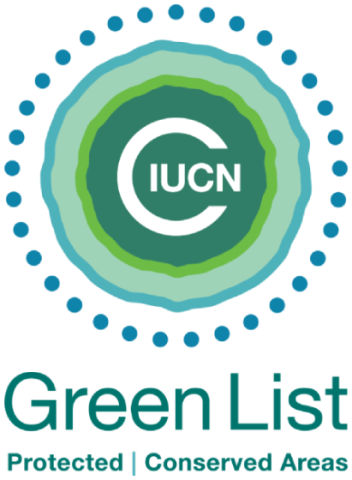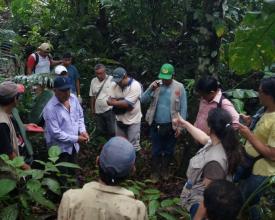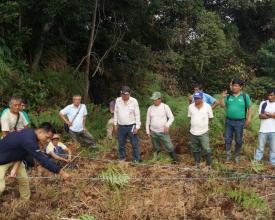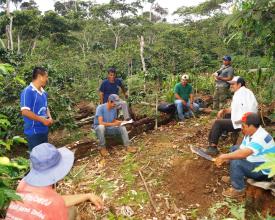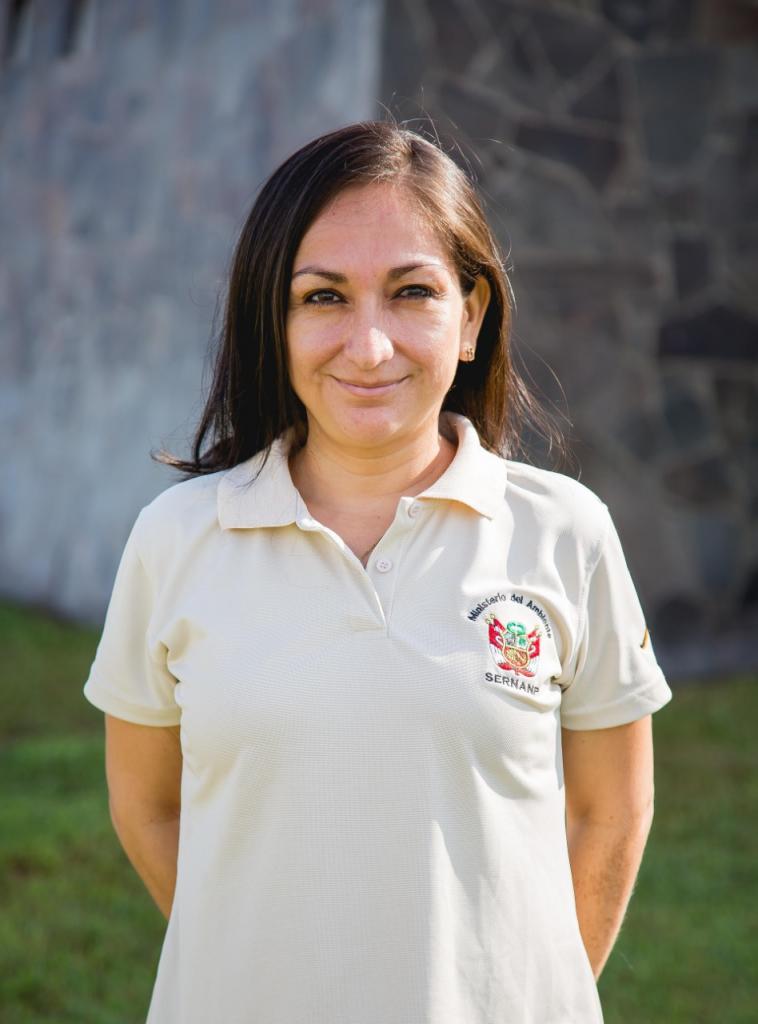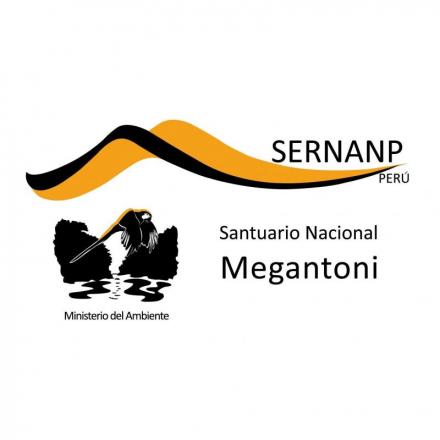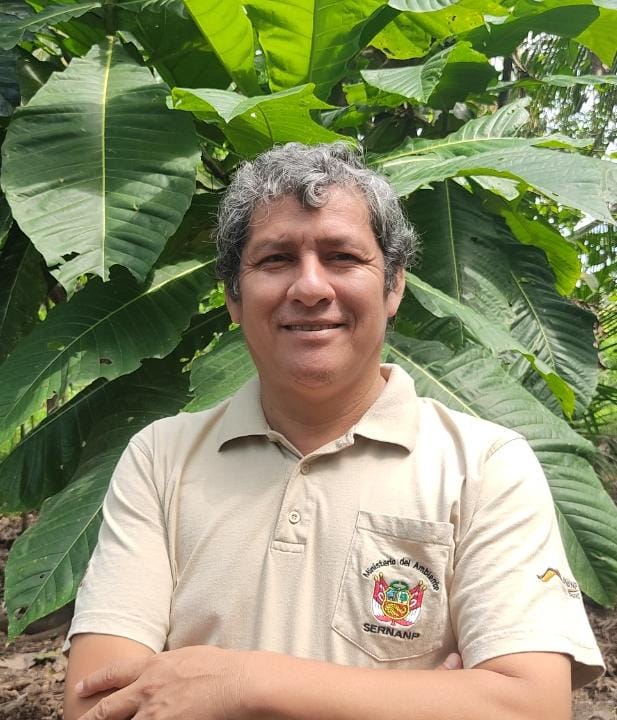
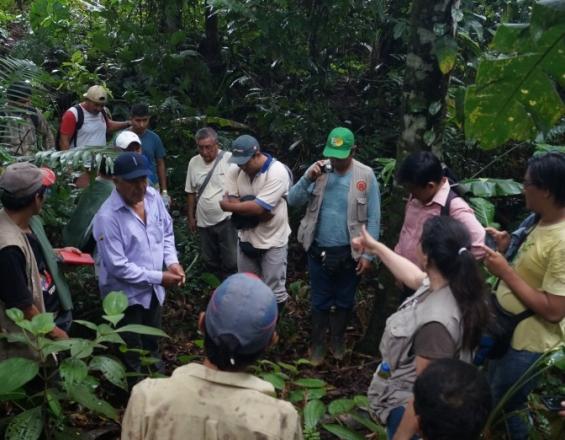
The Cordillera Azul Restoration project has been promoting ecological restoration processes in the villages of San Juan and Lejía in the San Martín region since 2018, in 50 hectares that connect to a landscape of 500 ha, in the Buffer Zone of the Cordillera Azul National Park (PNCAZ). For this purpose, CIMA (the organization executing the PNCAZ management contract) has signed a cooperation agreement between the National Agrarian University of La Selva, the hamlet of San Juan and the village center of Lejía. The communities have Blue Agreements for collaboration as a participatory strategy for territorial planning and Quality of Life Plans.
Context
Challenges addressed
oSocial
- Consolidate a joint working relationship that includes conservation actions between the inhabitants of San Juan and Lejía with the Park's management and with CIMA - Cordillera Azul as the Executor of the Administration Contract of the protected area.
- Consolidate the articulation of conservation actions with local management tools such as the Mapping of Uses and Strengths, Participatory Communal Zoning, and Quality of Life Plans.
- Scale the project to other localities in the region such as Tocache through a project to be implemented by CIMA-Cordillera Azul with funding from Technoserve, USAID.
Environmental
- Contribute to the improvement of the state of biodiversity and the maintenance of the integrity of the benefits and ecosystem services provided by nature.
Economic
- Establish alliances to identify markets for agroforestry products and promote synergies with local institutions to promote joint actions in this area.
Location
Process
Summary of the process
The participatory management of the PNCAZ, in which the Head of the design and implementation of the n﷽﷽﷽﷽﷽﷽﷽﷽restauracil other in the formation ules that CIMA-Cordillera Azul has with the protected area, the Executor of the Administration Contract and the local population participate, is a management strategy that generates successful results. It is essential to strengthen the capacities of the population so that they have the necessary tools to be able to plan their vision of the future with a focus on sustainability. Thus, this vision of the future will aim at actions oriented towards the maintenance and recovery of the forest and its ecosystem services on which the local populations living in the park's A.Z. depend. Thus, under a long-term vision, the population, convinced of the benefits of conservation, can prioritize actions such as restoration to recover their forests and improve their quality of life.
Building Blocks
Villagers bet on forest conservation through sustainable productive activities
The villages settled in the PNCAZ's Buffer Zone have been using the area's resources since before its creation, mostly for informal timber extraction. The settlers commented that they saw the creation of the protected area as a threat because of the restrictions that could be imposed on them. However, the joint work between SERNANP and CIMA-Cordillera Azul has promoted the development of alternative economic activities such as coffee and cacao in agroforestry systems, as well as the development of local management instruments such as Quality of Life Plans. After years, the local people recognize that they have stopped working for timber and have begun to conserve their forests and natural resources for the sake of future generations. The population has prioritized increasing forest cover in their territories to improve water supply and increase coffee and cacao production, for greater economic benefit and quality of life. Its replication in other areas around the protected area in the Tocache sector and in general throughout the San Martin region, one of the regions most affected by deforestation in Peru, makes it a very important initiative.
Enabling factors
- Synergy between the park administration, the executor of the administration contract, and the inhabitants of the buffer zone for the joint management of the protected area.
- Co-management between CIMA-Cordillera Azul and SERNANP aimed at the conservation of the PNCAZ and the sustainable development of the partner communities.
- Approval of participatory management tools such as Quality of Life Plans and Blue Agreements.
Lesson learned
- The organizations that manage the protected area should work together according to their roles and functions, but with a single objective and common strategies.
- Conservation and restoration actions should go hand in hand with the promotion of profitable productive activities that can generate income for the population.
- The articulation of the State's efforts with other conservation and restoration initiatives, under a Management Contract approach, allows for the incorporation of joint and complementary actions in the protected area's management.
- The development of local populations should go hand in hand with conservation actions.
Scalable strategies for ecological landscape restoration in protected areas in Peru.
The project seeks to establish, together with the main local stakeholders, ecological restoration demonstration sites in the buffer zone of the PNCAZ, from which landscape connectivity can be re-established, generating spatially scalable experiences. This connectivity will contribute to the maintenance of natural values and ecological processes within the protected area in the medium and long term, as well as to a better quality of life for the inhabitants. Natural regeneration, exclusion of threats and assisted succession are used to establish these restoration demonstration areas, which will directly benefit some 200 families, all within the framework of the Blue Agreements and as a result of a participatory management strategy of territorial planning through quality of life plans.The aim is to generate a learning community, as well as to strengthen the technical and organizational capacities of the population through field schools, training of trainers, producing tools that will be the basis for adaptive management, appropriation, sustainability and spatial scaling of the model.
Enabling factors
- Respect and strengthening of the co-management model in the PNCAZ and the role of the Management Contract Executor (CIMA-Cordillera Azul).
- Local populations are strategic allies and support co-management based on a conservation and development strategy, implemented through sustainable economic activity programs.
- Local populations, based on a conservation and development strategy, perceive the benefits of forest conservation.
Lesson learned
- The commitments established between the local populations, CIMA-Cordillera Azul and the PNCAZ through the Blue Agreements are fundamental for the implementation of sustainable activities, among which the restoration project is framed.
- The sustainability of the project is based, among others, on the training of specialized trainers in the design and implementation of restoration strategies and techniques that are organized in educational modules, replicable in new areas. These modules will be adopted in the academic curriculum and/or extension programs of at least one academic institution.
- The strengthening of local populations, as managers of the protected area, is fundamental to guarantee the sustainability of the actions.
Impacts
The restoration project seeks the following results:
- Activate successional processes, favoring the reestablishment of forest functionality and structure in the PNCAZ Buffer Zone.
- Facilitate the flow of ecological processes (pollination and seed dispersal) across the landscape and between the Park's Buffer Zone.
- Strengthen the capacities of local people, park rangers, CIMA technicians, students and trainers through field schools, creating a learning community.
Among the benefits or potentials are:
- Maintenance of important ecosystem services for the local population, such as water supply, pollination and soil conservation.
- Connectivity of forest patches contiguous to cocoa and coffee plantations, which contributes to improved production in the medium term.
- Favorable impact on water availability, especially in the tributaries of the Lejía and Humazapa streams in the villages of Lejía and San Juan, respectively. The maintenance and increase of the water service will contribute in the medium term to having an adequate volume of water not only for direct use and local agriculture, but also for the operation of the electric turbine that supplies electricity to 60 families in the hamlet of Lejía.
Beneficiaries
- Inhabitants of the San Juan and Lejía hamlets in the Cordillera Azul National Park Buffer Zone.
- Indirect beneficiaries: other nearby populations settled in the Buffer Zone in the San Martín sector.
Sustainable Development Goals
Story
The project seeks to establish, together with the main local stakeholders, 50 demonstrative hectares of ecological restoration in the Buffer Zone of Cordillera Azul National Park, from which the connectivity of the landscape can be reestablished in 500 ha, generating spatially scalable experiences. This is a pioneering experience in the country and is the first restoration project in a protected area in Peru, in the towns of Lejía and San Juan. Based on a study carried out in the northwestern part of the park, in San Martin, one of the most deforested areas in the country, forest patches with higher carbon density, connectivity potential and low probability of deforestation have been identified. These complement and help select areas that had already been identified as forest recovery zones in the participatory zoning processes carried out. Ecological restoration in degraded areas will connect these patches of forest in the park's Buffer Zone. This will initiate a process of recovery of the services that these conserved ecosystems contribute to local environmental conditions, as well as to the development and sustainability of the population's economic and cultural activities.
Using natural regeneration, exclusion of threats and assisted succession, two restoration demonstration areas have been established in the districts of Shamboyacu and Tres Unidos (approximate area of the landscape: 1500 ha; ca. 200 families) in villages with which CIMA has Blue Agreements of collaboration, as a result of the participatory strategy of territorial planning and quality of life plans. The different processes of the project will generate a learning community, and will strengthen technical and organizational capacities, through field schools, training trainers, producing tools that will be the basis for adaptive management, appropriation, sustainability and spatial scaling of the model. The IUCN Green List of Protected and Conserved Areas represents a worldwide recognition of co-management and the commitment to continue with actions in a PA with a strong intercultural component (D.Huamán, 2018. SERNANP).
